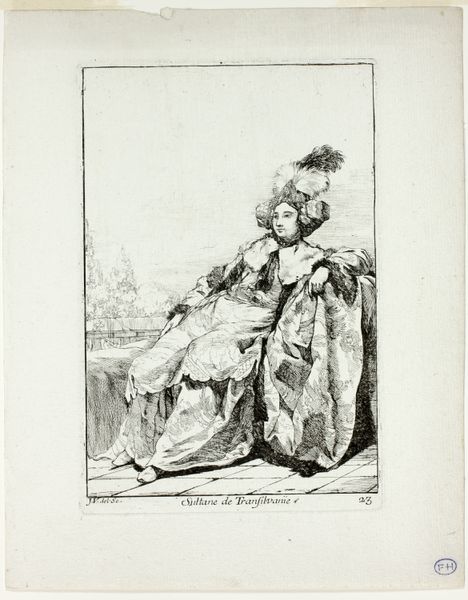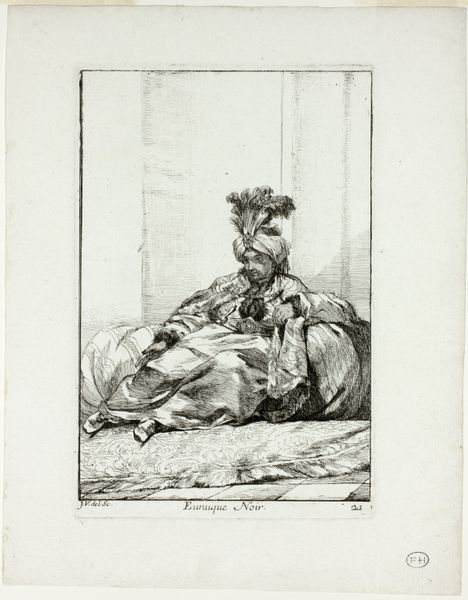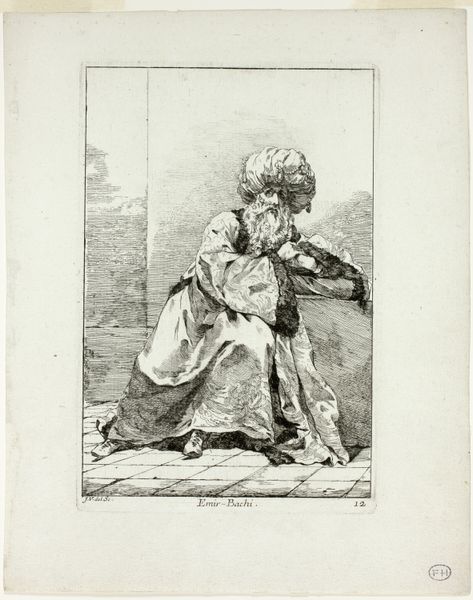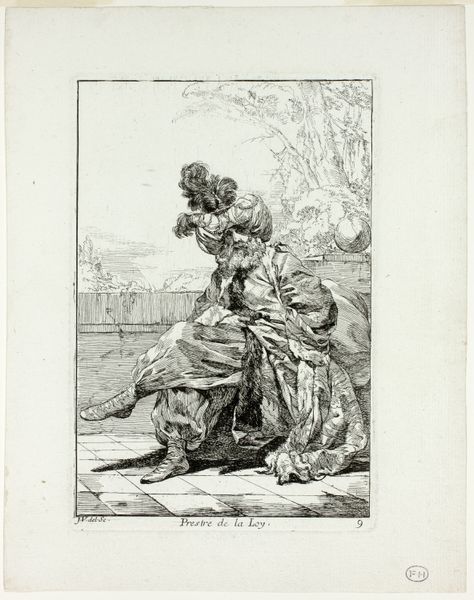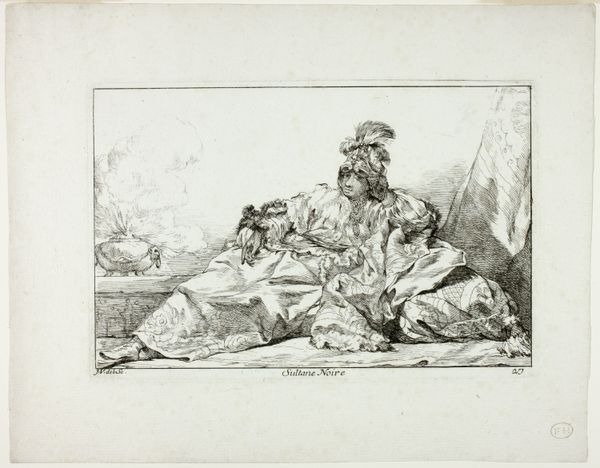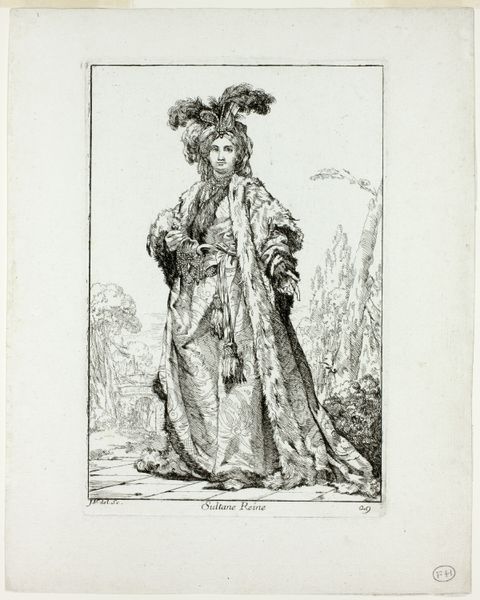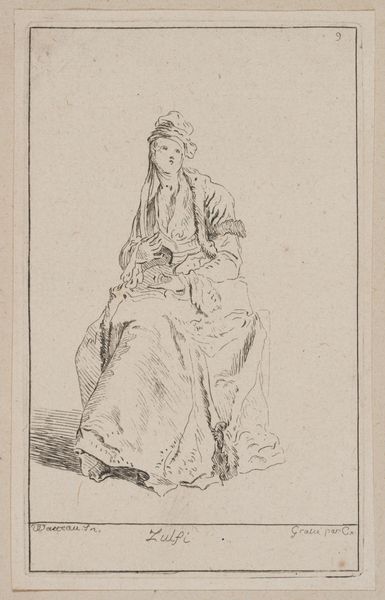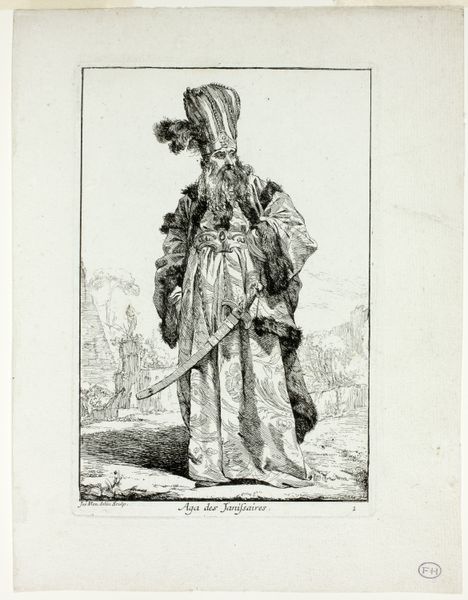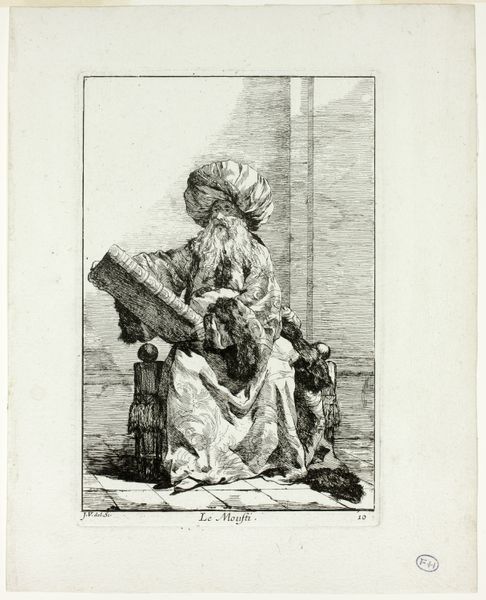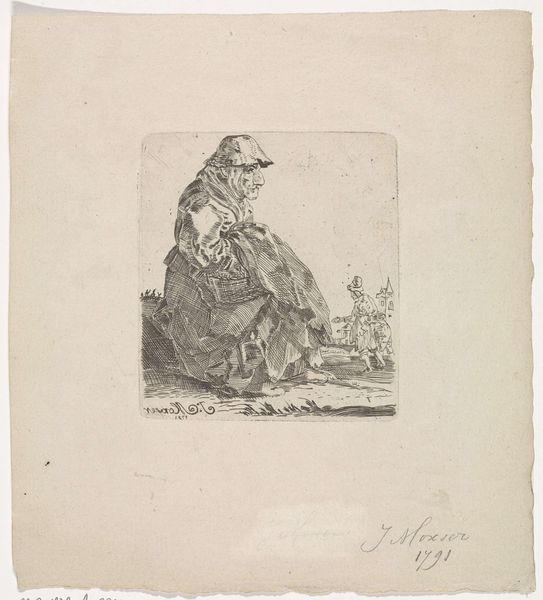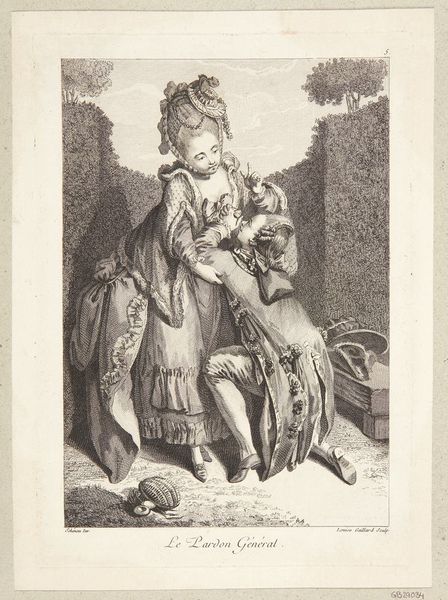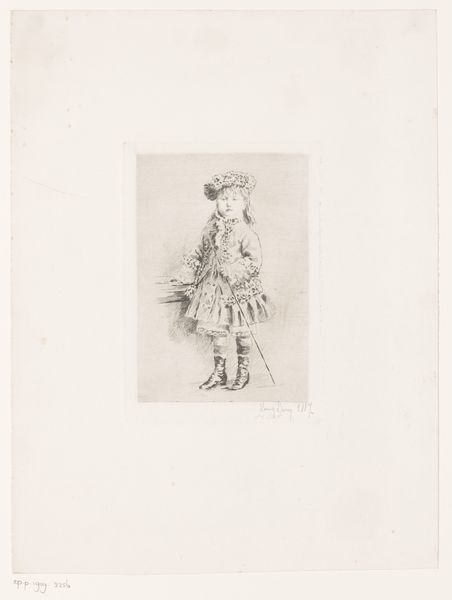
Sultane Noire, plate 28 from Caravanne du Sultan à la Mecque 1748
0:00
0:00
drawing, print, etching, paper
#
portrait
#
drawing
#
baroque
# print
#
etching
#
figuration
#
paper
#
history-painting
Dimensions: 197 × 132 mm (image); 215 × 136 mm (plate); 265 × 206 mm (sheet)
Copyright: Public Domain
Editor: So, this is "Sultane Noire" by Joseph Marie Vien, from 1748. It's an etching on paper, and it feels like a glimpse into another world. What strikes me most is the figure's expression, a kind of detached serenity, even amidst all the opulent textures. What do you see in this piece, especially considering the visual language of the time? Curator: Indeed. The "Sultane Noire," beyond being a portrait, taps into a deeper cultural fascination with the 'Orient' prevalent in 18th-century Europe. Look at the symbolic weight carried by her clothing. The turban, adorned with plumes, doesn't simply depict attire, it signifies status and the exotic ‘other’. Do you notice how Vien uses light and shadow to create a sense of mystery around her? Editor: I do. It's almost like she's deliberately enigmatic, not revealing too much. So, you're saying the image plays into existing European fantasies about the East? Curator: Precisely. Vien, while perhaps attempting to depict accurately, couldn't escape the symbolic baggage associated with such imagery. The very title, “Sultane Noire,” evokes notions of power and perhaps even danger, filtered through a European lens. Think about the colors or objects that consistently reappear when the “Orient” is depicted. What emotions are typically associated with these visual symbols? Editor: I suppose that it’s romantic, maybe a little intimidating. There's definitely a sense of distance, even in this intimate portrait. It's powerful to see how even artistic depictions are loaded with cultural assumptions. Curator: Exactly! And it prompts us to consider how we interpret and perpetuate these symbols even today. The 'Sultane Noire' isn't just a historical portrait; it's a mirror reflecting our own biases and the enduring power of visual symbols.
Comments
No comments
Be the first to comment and join the conversation on the ultimate creative platform.
